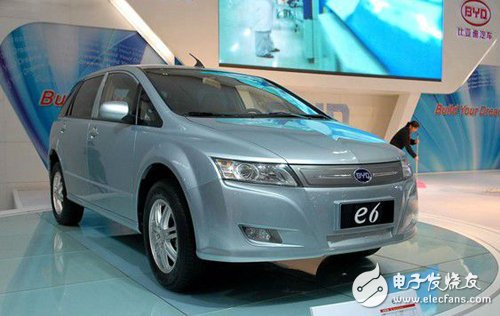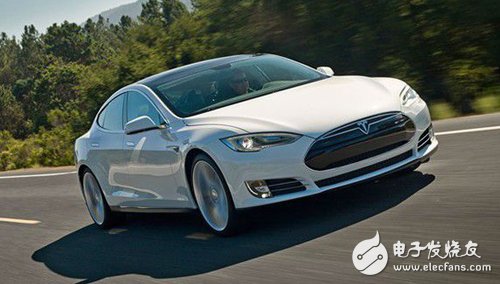With the continuous promotion and development of new energy vehicles, more and more car owners are focusing on electric vehicles, and as a source of electric vehicle power, batteries have become the focus of people's concern. Therefore, Xiao Bian deliberately sorted out and studied the information of the three types of power batteries that are common on the market today to help you understand the advantages and disadvantages of these batteries!
Lithium iron phosphate battery - application model: BYD E6
The BYD e6 is the longest cruising range of domestic electric vehicles. It is equipped with a 63kWh lithium iron phosphate battery and has a cruising range of 300km. As an independent pure electric vehicle that was listed earlier, BYD E6 can be said to have experienced the tempering and testing of the market, and people have an objective and accurate understanding of it. Although the latest BYD E6 will be equipped with the lithium iron phosphate lithium battery exclusively developed by BYD, but the BYD E6 has been using lithium iron phosphate battery, Xiaobian chose BYD E6 as the lithium iron phosphate battery. Representative models.

The lithium iron phosphate battery used by BYD E6 belongs to the lithium ion secondary battery, and its discharge efficiency is high. The charge and discharge efficiency can be more than 90% under the condition of discharge, which is 10% higher than that of the lead-acid battery used in the low-speed electric vehicle. Therefore, it is suitable for use as a power battery.
The safety of lithium iron phosphate battery is also very good, it can be kept stable at high temperature within 390 °C, ensuring the inherent high safety of the battery, and will not explode or burn due to overcharge, over temperature, short circuit, impact. It is easy to pass the acupuncture experiment. Moreover, the lithium iron phosphate battery does not contain any heavy metals and is not directly harmful to the human body.
At the same time, lithium iron phosphate batteries have a long service life. The bus industry leader Yutong bus uses Ningde era products after the data shows: lithium iron phosphate battery used 80% after fast charge, can be safely reached 4000 to 5000 times, 70%, can also guarantee 7000-8000 times, the theoretical life can be reached 7~8 years.
However, lithium iron phosphate batteries also have their own disadvantages. Compared with other types of power batteries, the price of lithium iron phosphate battery is higher, and the battery capacity is smaller. The same battery capacity, lithium iron phosphate battery is heavier and larger, which seriously affects the battery life. In addition, lithium iron phosphate batteries are basically not recyclable after they are scrapped, and there is no recoverable value. Therefore, the application of lithium iron phosphate battery in electric vehicles will increase the cost of car purchase and use, and the battery can not be recycled, which will cause waste and consumption of resources to some extent.
Ternary lithium battery - application model: Tesla ModelS
As a well-known electric car, the Tesla ModelS has a cruising range of 486 kilometers and a battery capacity of 85kWh. This is due to the 8142 3.4AH Panasonic 18650 ternary lithium battery battery pack.

The ternary lithium battery refers to a lithium battery using a lithium nickel cobalt manganese ternary positive electrode material as a positive electrode material, which has high energy density, high volume specific energy, and relatively low price. For this reason, after comparing more than 300 batteries, Tesla ModelS chose a ternary lithium battery as the power battery. With the advancement of technology, the ternary material structure has been further optimized to improve the stability of the ternary battery itself, and the application of the ceramic diaphragm technology can also help the ternary lithium battery to block the short-circuit source in time when the short circuit occurs, the ternary The safety performance of lithium batteries has also been improved.
However, the shortcomings of the ternary lithium battery are also obvious. Detachment of ternary materials
The oxygen temperature was 200 ° C, the exothermic energy exceeded 800 J/g, and it was not possible to pass the acupuncture experiment. This indicates that the ternary battery is prone to cause safety accidents such as burning and explosion in the event of internal short circuit and damage to the battery casing. In addition, due to the nature of the material itself, the ternary lithium battery has a relatively short service life. At the same time, due to the global global shortage of nickel and cobalt resources, its large application may lead to an increase in market prices and increase future vehicle costs.
However, as far as the current market situation is concerned, since the price advantage of the ternary lithium battery is relatively obvious, it can help control the cost of the electric vehicle, and has a higher energy density. The attention of the automobile manufacturer to the ternary lithium battery is also continuously increasing. The new energy-listed EV200 and ES210 electric vehicles abandoned the lithium iron phosphate route and switched to a ternary lithium battery.
Lithium Manganate Battery - Application Model: Kai Chen Morning Wind
As one of the best-selling electric cars in the world, Nissan’s name is well-known overseas, and as the Chinese version of “Learning Wind†– Qichen Chenfeng has also shown certain strength in the domestic market.

Qichen Morning Breeze and Nissan Leaf are produced on the same platform and use the same thin-film, high-performance lithium manganese oxide battery. Nissan chose lithium manganate batteries because lithium manganese oxide batteries have better safety performance and higher tap density. In the same volume, batteries can hold more substances and have higher power. Due to the high manganese content and abundant resources, the cost of producing lithium manganate batteries is also low, which can reduce the cost of purchasing cars for consumers.
But behind all the advantages, lithium manganate batteries have their own shortcomings. Since manganese itself is not stable in nature and easily decomposes to generate gas, it is often used in combination with other materials to reduce the cost of the battery core, but its cycle life decays faster. At the same time, instability can also cause the battery itself to easily swell. In addition, compared with other lithium ion materials, lithium manganese oxide batteries have poor high temperature resistance and their relative life is also affected.
The main function of the Solar Charge Controller is to manage the charging and discharging process between the Solar Panel and the battery in the solar power generation system. Its main function is to protect the battery from overcharge and over-discharge damage, ensure battery charging efficiency, and stabilize the operation of the solar power generation system.
Main effect:
Charge control: The solar charge controller controls the charging process by monitoring the voltage and current generated by the solar panel to ensure that the battery is charged at the appropriate voltage and current to extend the battery life.
Overcharge protection: The solar charge controller can monitor the charging status of the battery, and when the battery is fully charged, it will automatically stop charging to avoid battery damage caused by overcharging.
Over-discharge protection: The solar charge controller can monitor the discharge state of the battery. When the battery power is lower than a certain level, it will automatically stop discharging to avoid battery damage caused by over-discharge.
Differences from other charge controllers:
The solar charge controller is a charge controller specially designed for solar power generation systems, the main differences are as follows:
Applicable Energy: The solar charge controller is suitable for solar power generation systems, mainly used to manage the charging and discharging process between solar panels and batteries. While other charge controllers may be suitable for different energy generation systems, such as wind energy, hydro energy, etc.
Charging characteristics: The solar charge controller is optimized for the characteristics of the solar panel, and can control the charging process according to the output power and voltage characteristics of the solar panel. Other charge controllers may be optimized for different types of energy generation characteristics.
Protection function: Solar charge controllers usually have overcharge protection and over-discharge protection functions to ensure the safe charging and discharging of batteries. Other charge controllers may have different protection functions, depending on the needs of the application scenario.
Overall, the main role of the solar charge controller is to manage the charging and discharging process in the solar power generation system, protect the battery from damage, and stabilize the system's operation. Compared with other charge controllers, it is optimized for the characteristics of solar power generation systems and has unique functions such as overcharge protection and over-discharge protection to meet the needs of solar power generation systems.
eco worthy solar charge controller, solar panel controller types, solar charge controller and inverter, solar cell controller, solar panel battery charge controller
Ningbo Autrends International Trade Co., Ltd. , https://www.aitsolarpanels.com